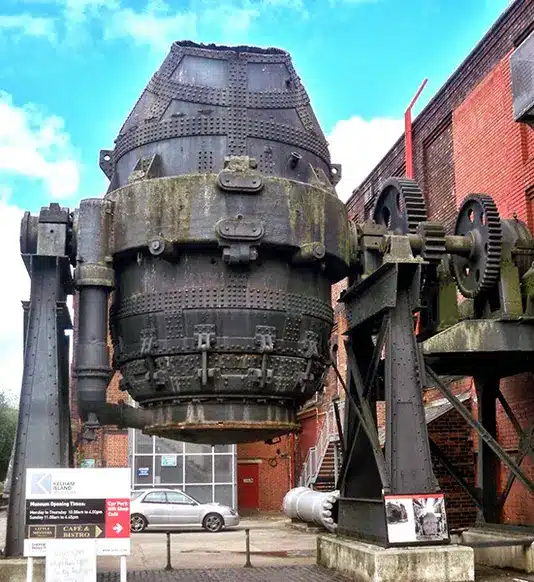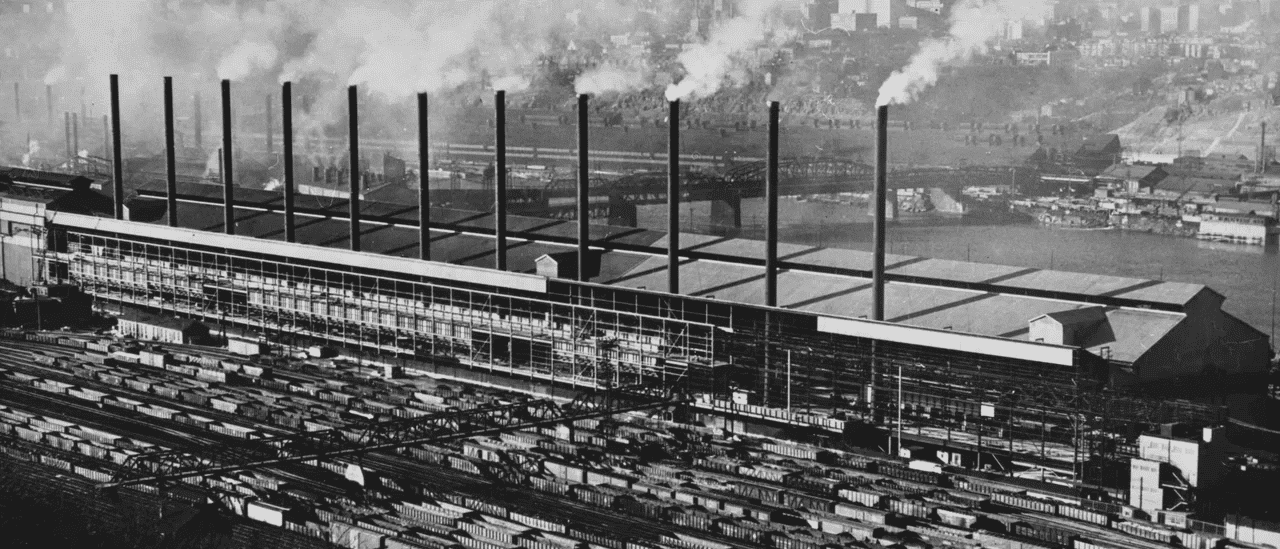
The steel that gives our modern buildings their soaring height and grandeur was an expensive luxury until the Bessemer process came along. The British metallurgist Henry Bessemer registered 110 patents and is credited with advancing the Second Industrial Revolution by making mass production affordable.
His method involved blowing air into molten iron, which caused the impurities (silicon and carbon) to oxidize, raising the temperature of the reaction.
Iron Ore
The Bessemer process is a revolutionary steel manufacturing technique that dramatically reduced the cost of producing high-quality steel. It was introduced in 1856 by English inventor Henry Bessemer. Previously, the production of steel required a lengthy and expensive process that involved heating scrap iron and pig iron in an open hearth furnace until they were combined into a homogenous mass that could be cast into beams. The Bessemer process bypassed the wrought iron stage, greatly shortening the production time and allowing for large-scale production. As a result, it was possible to build structures like multi-story buildings and armaments that were simply impossible or impractical with traditional methods.
In his attempt to make the process more efficient and practical, Bessemer designed a pear-shaped receptacle he called a “converter.” This vessel had a narrow opening at its top and was supported on pivots (trunnions) that allowed it to be tilted during operation. Bessemer blew air into the molten iron through a series of perforations on its sides, called “tuyeres.” This forced oxygen into the iron and caused it to react, oxidising silicon and carbon. The reactions were exothermic, which caused the iron to heat up quickly.
Unfortunately, the blast of air also caused phosphorus to form in the molten iron, which made it brittle. Fortunately, skilled metallurgist Robert Mushet discovered that adding spiegeleisen—a ferromanganese alloy of iron, nickel, and manganese—to the converter would allow it to remove excess oxygen without causing phosphorus to form.
Furnace
In the early industrial revolution, Henry Bessemer invented a process to make steel more easily and cheaply. It enabled the transition from the Age of Iron to the Age of Steel and greatly enhanced industry and business. The new steel was stronger and could be made into colossal machines and structures. It also allowed for longer and heavier railroad tracks to be laid.
The Bessemer Process relied on blowing air through molten steel to remove excess carbon and impurities. It involved charging a pear-shaped vessel of iron or steel (the converter) with molten iron, then introducing cold air into the converter via perforations. Bessemer blew air through the converter to decarbonize it, which increased steel production rates by a factor of 10 and lowered costs significantly.
While the process had great advantages, it did have some issues. One was the fact that phosphorus—an unwanted impurity that makes steel brittle—was not removed from the molten iron. This meant that the initial Bessemer process could only be used with phosphate-free pig iron, which had to be imported from Sweden and Wales. In 1876, Welshman Sidney Gilchrist Thomas discovered that adding a chemically basic material such as limestone to the Bessemer converter solved this problem. The limestone drew the phosphorus into the slag and could be skimmed off for reuse.
Using the process, operators monitor and adjust the level of oxygen introduced into the molten metal to achieve the desired composition of steel. Once the desired composition is achieved, the steel is poured into ladles for further processing or casting. This process became known as the Bessemer Process, and it remained in use until it was replaced by more advanced electric arc furnaces and other more technical oxygen steelmaking processes.
Bessemer Converter
Bessemer’s method involved blowing air into a vessel called the converter. The egg-shaped pot held molten iron, and cold air was blown into perforations in the top of the vessel. This forced oxygen into the steel, causing silicon and carbon to oxidize and burn off as gas. The process took only 20 minutes and drastically raised annual steel production while lowering costs. It was crucial in propelling the Industrial Revolution, allowing skyscrapers, bridges and colossal machines to be made of steel.
The refractory lining of the converter is made of clay, silica or dolomite (sometimes ganister sandstone). When different property steels are to be produced, other elements are introduced into the molten metal after the air-blowing process, usually in the form of spiegeleisen – an iron-carbon-manganese alloy.
Henry Bessemer patented his process in 1856, but it had taken years of trial and error to perfect it. He was not alone in his efforts; a Pittsburgh ironmaster named William Kelly had independently discovered a similar method.
A key difference was that Bessemer blew pure oxygen into the molten iron, rather than atmospheric air. The latter was rich in nitrogen, resulting in the formation of sulfur oxide and other impurities that lowered product quality. Bessemer also developed a special nozzle to control the flow of oxygen into the liquid iron, ensuring that just the right amount was introduced.
Casting
Bessemer’s process was revolutionary because it enabled unskilled workers to produce steel for less money. The new technology allowed railroads to be constructed, which in turn made travel easier and more efficient. This allowed for faster growth, and accelerated the Industrial Revolution.
Using his new furnace, Bessemer forced cold air into the molten iron. His foundry workers thought he was foolish for introducing air into the molten metal, as it was counterintuitive. However, Bessemer was right – the air flow caused silicon and carbon to oxidize and leave as slag. This entire process only took 20 minutes and greatly raised steel production, while lowering costs.
The air-blown molten metal was then cast into the desired shape, and additional alloying materials were added for specific properties. This was a big improvement over the old crucible steel-making technique, which required three hours to melt blister iron. It also reduced the amount of coke needed by nearly half.
A few years later, Welshman Sidney Gilchrist Thomas discovered that adding limestone to the slag produced by the Bessemer process removed unwanted phosphorus and improved the quality of steel. This is now the standard practice of removing impurities from molten metals. Other innovations lowered the cost even further, making steel production cheaper and more widespread than ever before. This was the first method discovered for mass-producing high-quality steel, and the foundation of modern industry.






























